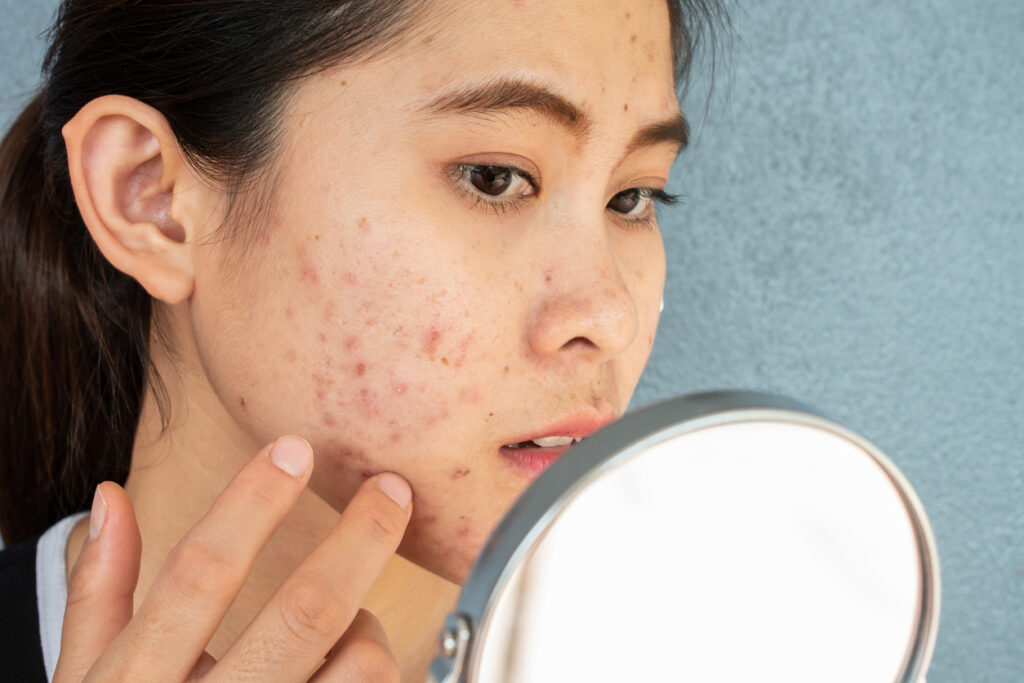Janus kinase (JAK) inhibitors have had game-changing effects for patients with psoriasis, atopic dermatitis, vitiligo, and alopecia areata, but the use of these potent medications has been associated with JAK inhibitor-associated acne (JAKne).
In a systematic review and meta-analysis of 25 clinical trials comprising 10,839 participants, people taking JAK inhibitors were close to four times more likely to develop acne than their counterparts taking placebo. This association was stronger among studies conducted among patients with dermatologic indications.The study is published in JAMA Dermatology.
TDD reached out to experts to learn more about JAKne and how to treat it.
What is JAKne?
“JAKne is not one thing. It is a spectrum of acne and acneiform conditions [seen in patients taking JAK inhibitors],” says Brett King, MD, PhD, an Associate Professor of Dermatology Yale University School of Medicine in New Haven, CT.
Exactly how JAK inhibitors cause acne is not fully understood yet. “It is interesting that it is seen with every JAK inhibitor, regardless of selectivity for JAK1, JAK2, JAK3, or Tyrosine kinase 2 (TYK2),” he says.
“JAKne or JAKi-associated acne is similar to epidermal growth factor inhibitors (EGFR) inhibitor-associated acneiform eruption nomenclature, now called papulopustular eruption, [as] right beneath the surface of EGFR, and human epidermal growth factor receptor 2 (HER2) are tyrosine kinases like JAK,” adds Adam Friedman, MD, Professor and Chair of Dermatology at the George Washington School of Medicine and Health Sciences in Washington, DC.
JAKne can even occur with topical JAK inhibitors, adds Shanna M. Miranti, MPAS, PA-C, a Physician Assistant with Riverchase Dermatology in Naples, FL. “The exact mechanism of action is unknown, but it may be related to abnormal follicular, keratinization, or a change in the microbial colonization of the skin,” she says.
The acne eruptions in patients taking JAK inhibitors are usually mild. “Most patients did not discontinue their treatments because of this side effect.,” she says. “We are the experts in treating acne, so dermatology providers are very confident in treating any acneiform eruption…even JAKne.”
Treating JAKne
Some patients remit their JAKne after a course of oral antibiotics such as doxycycline for 4-8 weeks, says Dr. King. “Those patients have an acneiform reaction while others require chronic treatment with the same topical and oral medicines we use to treat typical acne vulgaris,” he says. “Uncommonly, a patient in the latter category needs isotretinoin, which will remit their JAKne.”
Dr. Friedman agrees. “This inflammatory dermatosis does respond to medication used to treat acne, such as topical retinoids, mild topical steroids, and oral tetracycline antibiotics.” He has found yeast on potassium hydroxide procedure from a pustule in a JAKne patients. In these cases, adding a topical azole antifungal was successful. “It’s good to seek out a scraping,” he advises.


